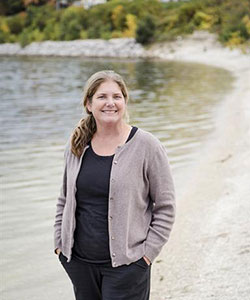Despite regulations against it, the release of untreated sewage into urban waterways is widespread, in part, because of leaks in the aging wastewater infrastructure.
Nearly 30 percent of stormwater discharge points in Milwaukee show evidence of such contamination, said Sandra McLellan, a UWM professor of freshwater sciences.

McLellan is heading a project that combines science and policy to improve water quality in urban areas.
With a $250,000 grant from the U.S. Geological Survey (USGS), McLellan and Steve Corsi, a USGS hydrologist, will collect data on sewage in Milwaukee and Wauwatosa waterways, and then develop an optical sensor that can estimate sewage contamination in real time.
The project’s third goal is to examine associated pollutants in water samples, such as pharmaceuticals, that can harm people and aquatic life.
In the water samples they collect, the researchers plan to analyze more than 200 different pharmaceutical compounds, over a dozen viruses and multiple types of harmful bacteria.
The optical sensor they are developing can be placed in a stream or pipe to detect sewage contamination. It emits a beam of light, which changes when it detects the chemical compounds that indicate sewage is present.
On the policy end, the researchers will work with water resource managers in Milwaukee and Wauwatosa to adapt the sensor and develop policies that address leaking wastewater infrastructure.
The idea is to provide sewage districts and other agencies with tools to better assess and mitigate pollution.
“We expect that this project will advance our understanding of sewage impacts on the Great Lakes,” McLellan said, “and it will allow us to infer the extent of the problem in other cities across the country.”



